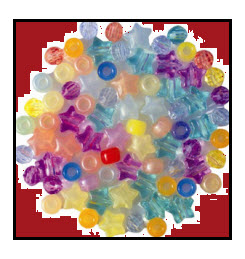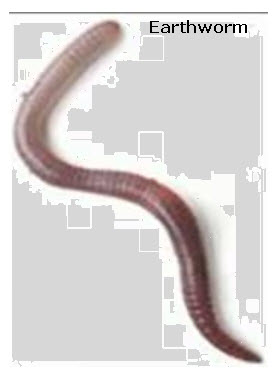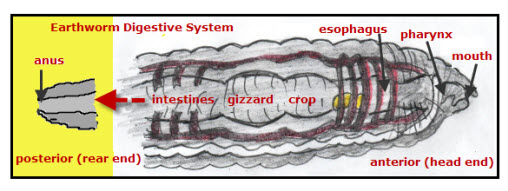Classification is a term used for organizing things, such as plants and animals, rocks and minerals, or the pony beads used in this activity. First prepare a mixture of beads for each group of 4 to 5 kids. The mixtures do not have to be exactly the same, but each group should include the following: […]
Archives for 2010
Earthworms: Eyes
Question: Do earthworms have eyes? Answer: Earthworms don’t have eyes, but they do move away from light. Earthworms can and do respond to light because they have light-sensitive cells scattered in their outer skin, especially at their anterior (front-head end) These cells send messages to the earthworm’s brain, which specializes in directing body movement in […]
Earthworm: Size
Annelids (ringed worms) range in size. The Giant Earthworms, of which Michrochaetus rappi is the largest. This worm’s average length is 54 inches (1.36 m) and largest recorded 22 ft (6.7 m) with a diameter of 0.8 inches (2 cm). The smallest Annelid known to science is Chaetogaster annandalai which reaches a length of only […]
Earthworm: Locomotion Model
A paper fan opens and closes in much the same way that an earthworm moves. If you hold one side of the paper fan and pull the other side outward, the pleated paper opens as it stretches out. This models the motion of an earthworm as it stretches forward when moving from one place to […]
Earthworm: Locomotion Model
A Slinky is a coil that climbs down an incline. The motion of the coils are a good model for the motion of an earthworm. First the front slinky coils stretch forward, and then rear coils are pulled forward. The video shows different ways that a slinky can move. Note that you have to get […]
Earthworms: Locomotion
Question: How do earthworms move without legs? Answer: First watch the video, and then read my answer and check out the earthworm activities below. Earthworms are invertebrates, which means they do not have a backbone. In fact, they don’t have any kind of bones, legs, eyes, or teeth. They feel wet, slimy, and squishy. While […]
Earthworms: Air Displacement
Question: Why do earthworms come to the surface after a big rain? Answer: If there is a lot of rain, the rain water not only fills the burrows of earthworms but also fills the spaces between rocks and particles of soil. In other words, the rain water displaces the air between the rocks and soil […]
Earthworms: Harvesting
How to Harvest Earthworms:
Earthworm: Reproduction
Earthworms are hermaphrodites ( her-maff-row-die-ts), which means they have both male and female sex organs. Even so, they still need to mate in order to reproduce. Mating: Since worms can neither see nor hear, but their bodies are extremely sensitive to touch. Because of this, earthworms feel vibrations when another worm is nearby. To mate, […]
Earthworm: Digestive System
Question: Do earthworms really eat dirt? Answer: Yes, earthworms eat dirt. But most of the dirt eaten by earthworms moves through their body and is deposited as waste. The waste of earthworms is called casts. There is much more to the earthworm’s digestive system than just eating and pooping dirt. An earthworm’s digestive system consists […]
- « Previous Page
- 1
- …
- 36
- 37
- 38
- 39
- 40
- …
- 54
- Next Page »



